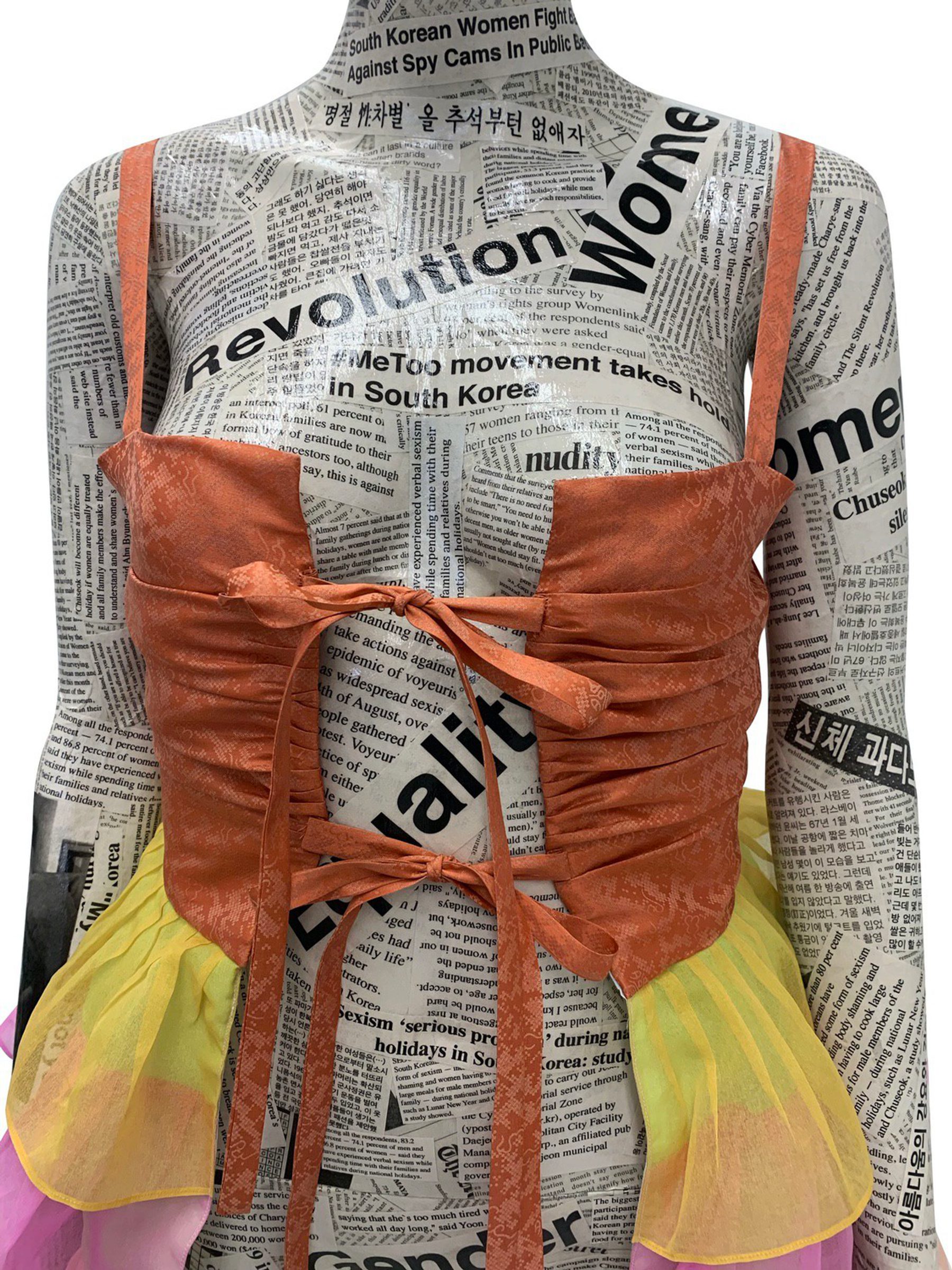
Can We Have Fun ?
Eunji Bae
When I think about my experiences in Chuseok, Korean thanksgiving day, it is not a moment that I can have a fun and relaxing time with relatives and friends. In fact, it is a time of domestic distress for me. Waking up in the early morning, only women of the family prepare for Charye, an ancestral honoring ceremony, by filling a table with food including newly collected rice and fruits. During Chuseok, Korean women spend the whole holiday making this feast set for their ancestors, while men spend the day loitering. This scene is typical for Chuseok in South Korea, and, for most South Korean women, Chuseok is more considered as a time of tolerance with long hours of domestic labor.
Can We Have Fun? is an installation which presents an updated scene of Chuseok, Korean thanksgiving day. The installation is comprised of three Hanbok dresses, Korean traditional costumes, and tableware from Charye, a feast set to value predecessors. Chuseok and Hanbok are examples of sexism in the Confucian tradition that has emerged and developed in ancient Korea. According to Confucianism, it is the sole virtue and duty of women to make the home, thus only women of the family spend the whole holiday making Charye, while their husbands spend the day loitering, leaving all the work to their wives. Moreover, when Hanbok was made Korean society hugely reflected the Confucian philosophy, and modesty was achieved by concealing the female form. Therefore, in wearing Hanbok women have to flatten their breasts by tightly wrapping them and the skirt and sleeve are made too long to move or work. In Can We Have Fun?, both Chuseok and Hanbok have been updated to remove aspects which highlight gender inequality, and news articles on the mannequins show the continuous sexism and struggles of the South Korean female. The garments are for three different female generations in South Korea.
Can We Have Fun? is an installation which presents an updated scene of Chuseok, Korean thanksgiving day. The installation is comprised of three Hanbok dresses, Korean traditional costumes, and tableware from Charye, a feast set to value predecessors. Chuseok and Hanbok are examples of sexism in the Confucian tradition that has emerged and developed in ancient Korea. According to Confucianism, it is the sole virtue and duty of women to make the home, thus only women of the family spend the whole holiday making Charye, while their husbands spend the day loitering, leaving all the work to their wives. Moreover, when Hanbok was made Korean society hugely reflected the Confucian philosophy, and modesty was achieved by concealing the female form. Therefore, in wearing Hanbok women have to flatten their breasts by tightly wrapping them and the skirt and sleeve are made too long to move or work. In Can We Have Fun?, both Chuseok and Hanbok have been updated to remove aspects which highlight gender inequality, and news articles on the mannequins show the continuous sexism and struggles of the South Korean female. The garments are for three different female generations in South Korea.